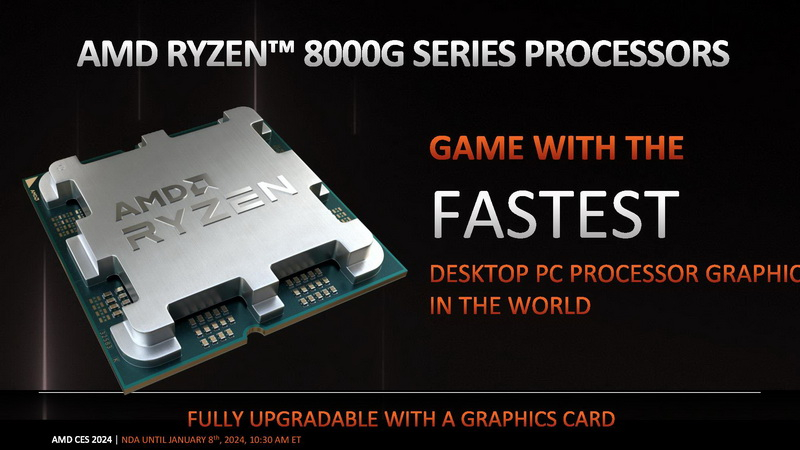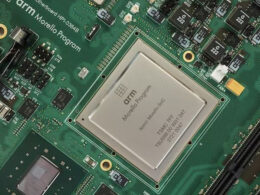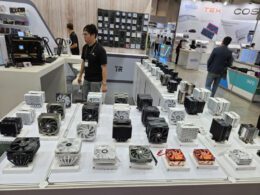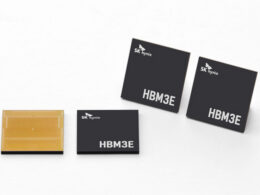AMD has officially launched the new Ryzen 8000G series desktop Accelerated Processing Units (APUs). The APU chips, the first of its kind made for the AM5 socket motherboards, feature Zen 4 architecture processing cores accompanied by RDNA 3 architecture graphic cores.
Ryzen 8000G APUs: An Overview
The Ryzen 8000G desktop APUs are an upgrade of the previously known mobile CPUs Ryzen 8040, but repackaged for desktop usage. Like the mobile version, these chips come equipped with an enhanced Ryzen AI engine (XDNA1), though it’s not featured in all the model variants.
Four models have been introduced in the Ryzen 8000G Hybrid Processor series. They range from four to eight cores supporting between eight to 16 virtual threads respectively.
Specifics of the Four Models
The entry-level processor in the series is the quad-core, eight-thread Ryzen 3 8300G. Equipped with hybrid architecture that comprises one standard Zen 4 Core and three compact Zen 4C cores, this model supports multi-threading with frequencies ranging from 3.45 to 4.9 GHz. The 65W TDP processor offers 12MB of cache memory and includes an integrated Radeon 740M graphic unit with four execution units. This model will initially only be available as a part of pre-built PCs from system integrators.
The Ryzen 5 8500G model, also based on hybrid core architecture, features two standard Zen 4 cores and four smaller Zen 4C cores, offering six cores supporting 12 threads. Frequencies range between 3.55 to 5.0 GHz, with the chip boasting 22MB cache memory and a TDP of 65W. It also includes an integrated Radeon 740M graphic unit with four execution units. Both Ryzen 3 8300G and Ryzen 5 8500G do not include the Ryzen AI engine.
The Ryzen 5 8600G offers six standard Zen 4 cores, with support for 12 threads. Frequencies are said to range from 4.35 to 5.0 GHz. It comes with 22MB cache memory, a TDP of 65W and includes embedded Radeon 760M graphics with eight execution units, capable of reaching a frequency of 2.8 GHz.
The top model, Ryzen 7 8700G, brings eight Zen 4 cores supporting 16 threads, and operates at frequencies between 4.2 and 5.1 GHz. The processor packs 24MB cache memory and supports 12 embedded Radeon 780M graphic execution units, reaching speeds of 2.9 GHz. Like the rest of the models, it maintains a TDP of 65W.
Performance Comparisons
Notably, AMD compared the performance of its Ryzen 5 8600G and Ryzen 7 8700G models to Intel’s Core i7-14700K, equipped with an UHD Graphics 770 unit based on Xe-LP architecture with mere 32 execution units. Despite this, AMD claims that Ryzen 5 8600G’s graphic performance is 3.4 times higher than Core i7-14700K at 1080p resolution in gaming, while Ryzen 7 8700G offers graphic performance up to four times higher.
AMD also compared overall performance of the Ryzen 7 8700G with a configuration consisting of the Core i5-13400F processor working in tandem with GeForce GTX 1650 discrete graphics card, a configuration currently valued at $410. AMD claims, the Ryzen 7 8700G can offer up to 1.31 times higher gaming performance, even admitting to a performance lag up to 11% in certain scenarios. In jobs tasks, AMD claims its processor is 1.1 to 4.6 times faster.
Graphics Enhancing Technologies
AMD Radeon 700 series integrated graphics, like its discrete Radeon RX 7000 video cards, support various modern technologies to enhance their performance. In particular, via AMD’s proprietary frame generation and HYPR-RX settings technology, the performance of Ryzen 8000G processors’ integrated graphics can be boosted by up to 75% in certain games.
Pricing and Availability
AMD has priced the high-end Ryzen 7 8700G at $329, the Ryzen 5 8600G at $229, and the Ryzen 5 8500G at $179. The lower-end Ryzen 3 8300G will be sold exclusively as part of pre-assembled PCs. All processors will be available starting from January 31st.





